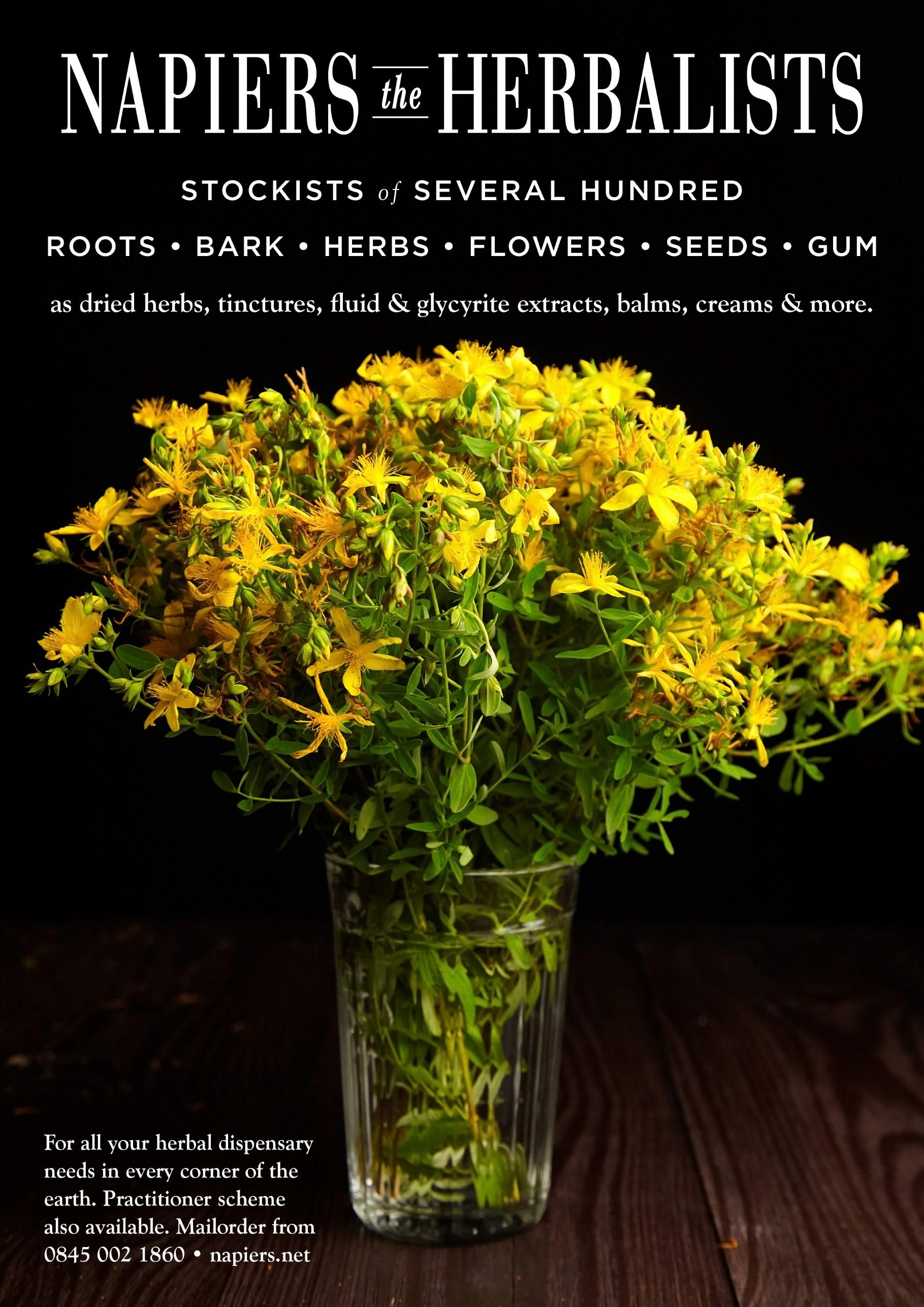
10 minute read
iv Our Man in the Field…. David Hughes meets Fiona Inglis
David Hughes meets Fiona Inglis
‘Bees in the walls,’ I repeat, somewhat aghast… Yes. Colonies of feral honeybees. The south-facing wall of the garden is hollow; the Victorians heated the wall with a coal furnace to retain heat for the fruit trees that would have grown espaliered across them. It’s fascinating to imagine how much honeycomb is inside there. We need to get a camera in and have a look…
Advertisement
I’m at Pyrus, a flower farm nestled in an historic walled garden, just south of Pencaitland. It’s a beautiful, captivating and, dare I say, romantic spot— with a long, wooded drive leading to a garden with the just the right amount of dapple to make me feel at home. I’m spending the afternoon wandering the beds, cooing at the flowers tended by the proprietor— talented florist and grower, Fiona Inglis —who’s spilling the tea on all things floral… We grow flowers for our own creative practise, as well as for florists and wholesalers, and we’ve recently started a direct retail side to the business. Prior to Covid, much of our work was events and weddings, so we’ve pivoted into flower subscriptions— which has actually been a really beautiful thing to do. A series of deliveries over a threemonth period is allowing us to share the changes in season— this is reigniting a fundamental love of flowers, and we’re really getting to share in the joy. Especially with the lockdown, when people weren't able to see their loved ones, the subscriptions seem to serve as a reminder that people are still thinking about them.
Meandering through the beds, my attention is drawn to the robust architecture of a row of deep-green plants with envy-inducing, pinkfringed buds, swelled to near bursting: These are our Peonies. The massproduced ones that come in from the Netherlands don't even compare. These are much bigger and more robust— practically the size of your face!
A few years ago, we became ambassadors for sustainable floristry— part of a global movement aimed at eliminating waste and unsustainable practices in the cut flower industry —as well as using locally grown materials. Growing on a reduced scale allows for greater versatility. There's a real value in it; not just in terms of reduced wastage, but flower quality is improved, and you have this huge variety of shape and tone to play with. It’s a far more environmentally friendly practice, as well. The commercial flower industry is massively unsustainable, as is. A piece of research recently explored the difference in carbon output for a locally produced bunch of flowers versus the equivalent imported bunch— the local flowers produced ten times less carbon! Two bunches of imported flowers ultimately equate to a one-way flight from London to Paris. That's an element of education that’s missing, and people need to be made more aware of the numbers that surround imported flowers with regard to carbon emissions and air miles. A movement is happening, though. When we started, about ten years ago, there were only six other flower growers in Scotland and now there are over sixty. So, there's certainly demand, although a few key pieces of the jigsaw are still missing in terms of distribution and logistics. Hopefully, some of the network of groups we’ve become a part of— Flowers Grown in Scotland and The Scottish Flower Grower Collective —can begin to address this.
There’re also the environmental issues stemming from the abundant use of chemicals within the commercial industry; ornamental crops are not beholden to the same health and safety regulations as the food industry. We’re all-organic out here, and have recently embraced the no-dig method— and the difference is obvious in the beds. The no-dig beds are retaining water better and have fewer weeds. It's highly cost-effective, too. Obviously, the initial outlay for compost at this scale is substantial, but that’s it. After that, you’re doing your best to make your own— making enough is an issue, mind. It’s all very much trial and error; somethings work for us, somethings don't, but you keep trying new techniques.
As we wander, my keen eye notices a few wild herbs proliferating:
There are a few patches we keep roundabout; things like Comfrey, that we can dig back in or use to make beneficial teas. This is our wildflower meadow, sown particularly for the pollinators— the amount you get is insane! There’s Borage in there, Chamomile, Poppies, all sorts. It’s a few different wildflower mixes, so in a few months’ time, all going well, this should be a beautiful patch of busy wildflowers…

Indeed, it was an all-you-can-pick-for-£5 extravaganza in this very wildflower meadow that prompted my first trip out to Pyrus a number of summers ago. It was an afternoon of brilliant mayhem among the buzzing bairns and bees. But by now, we’ve arrived at the polytunnels and I’m relishing the opportunity to take a nosey around inside— this is always the home of the good stuff… We use polytunnels to extend the season, primarily. This is the ‘Spring tunnel’, with all the Anemones and Ranunculus just finishing. They’ll be making way for the Antirrhinums and Sweet Peas. Once these Californian Poppies have gone, we’ll put the Asters in. It’s been a bit of a tricky year because of the cold Spring— everything is a wee bit delayed and feels a little bit ramshackle. It’s working, though, and by leaving some things to self-seed— the Cornflowers, the Ammi and the Nigella —you can produce a reliable crop that can be used to add nice texture here and there when making designs. We head to the next tunnel and… ‘Roses!’, I exclaim. I’m told Roses are Fiona’s first love, and where it all started. I can empathise. Some years ago, when I worked at Narcissus (an Edinburgh florist of repute), there was a local supplier called Mr. Smith. He had a wee market garden near Granton, and he would just supply Roses, Scabious, and Dahlias. That was it. His Roses were of insane quality— streets apart from the rigid, big-headed, scentless Dutch ones. His were short stemmed, with a scent that was just incredible and deeply authentic. There was always a customer waiting list for Mr Smith's Roses and I remember clearly at the time wondering why there were not more Roses like that, why only Mr Smith’s Roses were that good. Right now, I’m directed to take a sniff from a white Rose; it’s full and intoxicating enough to take you from your headspace for quite a moment: These are the first flush. About three weeks later than last year. Getting there now, though. Harvesting time is important with Roses, to catch them at their peak. Mixed in alongside, we have these Argentinian Forget-me-nots that provide a lovely texture to the bunches. The whole fluffy Gypsophila vibe came back into fashion recently, but if you’ve ever smelled them, they’re certainly not the bonniest. These provide a really nice alternative and are a lovely, delicate little thing. They flower really quickly, so you only get two weeks— at best —harvesting them. Another week and it’ll be done. We’ll just let it self-seed after that. But these short flowering windows produce blooms that can pepper seasonality into the bouquets. And what's nice about using our own compost is inevitably some seeds end up in there. So, when we top-dress, we end up with bits and pieces of nonintentional planting turning up that flower at different times. It can be a blessing and a curse when you're in a garden as old and established as this one; you never know what’s going to turn up.
At polytunnel number three it’s all action; clear evidence of a busy working week: This was the Ranunculus. They’ve just come out and have been replaced by these Asters. The Asters are great because they flower for a really long time— weeks and weeks —so you’ll get a really good harvest from them, no mad rush. Other flowers aren’t so forgiving and one of the tricky things is getting your timings right. With my Iris, I think it's going to be a warm weekend and they might just peak early, so I'll have to get my sales hat on. The Nigella, the Cornflower and Ammi are nice, easy, reliable flower crops to try. And this empty bed is going to be Cinnamon Basil. I’ve not grown it as a foliage before but I’m going to give that a try. That’s today’s job. Tour complete, Fiona tells me she has always been drawn to nature. At art college, all of her work was initially nature-based, and she found
herself focussing on the kind of creating that would allow her to sit in nature, working with the seasons and their ever-changing materials. Having never had a garden, nor previous horticulture experience, starting Pyrus was, nonetheless, a bit of a leap. Fiona says, ‘That's one of the beautiful things about gardening, though, the garden teaches you.’ Now, she can’t imagine not working with flowers. The garden we have just toured is considerably bigger than Pyrus Botanicals’ original base: This place found us, in a way; three separate people had brought us here before we were looking to move. It had been empty for years, was waist-high in weeds, but when we did need to move this was the first place we thought of. As it happened, the landlord was open to the idea and the timing just seemed to work perfectly. It wasn’t until the weeds were cut down that we really realised just how big this space is.
It’s a space that lends itself beautifully to the Pyrus Botanicals style— natural and organic, conveying texture and feeling, rooted in the garden and surrounding landscape. As distinct as can be from formal and controlled floristry, this feels much more honest— like Mr Smith’s Roses.
Finally, Fiona leaves me with her top recommendations for native cut-and-comeagain flowers, and some tips for building beautiful bouquets: Achillea will go all summer, as will perennial Scabious, and I’m loving the flush of lovely vibrant blue flowers on the Nepetia, the Cat Mint, right now. As for bouquets, the key is to be led by the materials— start by looking in the garden to see what’s flowering and what’s at its best. Consider each flower; what are its best qualities and what are the best ways to show them? If you have something with a bendy stem, then that wants to sit high up, so it can be appreciated; something with a big, blowsy head needs to be nestled to really maximise its size and beauty.

Start with a handful of medium length stems, each bringing their own qualities. Add to that a bit of a focal point, something showy, like the Peonies and Roses. Then place a couple of long stems for height and drama at the back, something airy and light is good. Next, weave in a few delicate items. Add in some interesting textural pieces, for contrast; seed heads or grasses work well. This is where growing your own flowers really comes into its own, because you’re not limited by what’s in the flower market— the garden provides its own unique personality, with flowers at all stages of their life cycle. And that’s it; a focal point, some height, delicacy, and texture/contrast. At the moment, I'm using Spanish Garlic— it has this twisty stem; very unique and personable.
You might also like to know that Pyrus run volunteer gardening days on a couple of Sundays a month throughout the summer. If you’d like to get involved, contact them at www.pyrusbotanicals.com, or via Instagram or Facebook @pyrusbotanicals
Images: Andrew Hope and Gabriela Silveira, courtesy of Pyrus Botanicals













